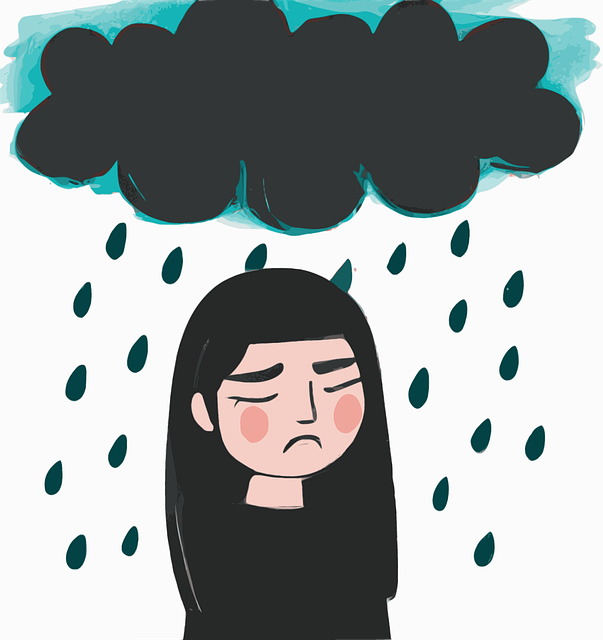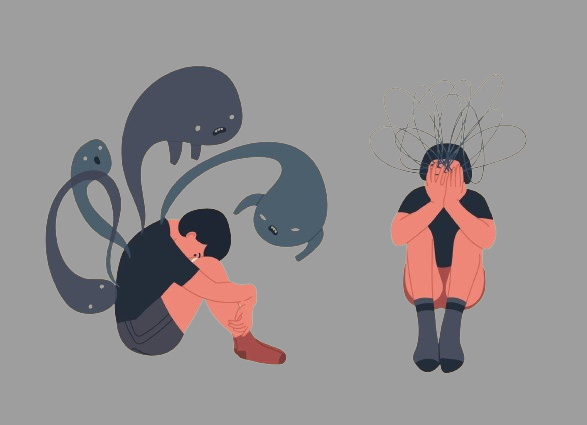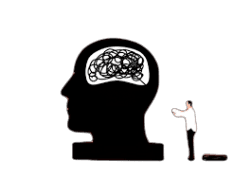Is bipolar disorder genetics? Bipolar disorder (BP) has been linked to specific genes and is often inherited. Your chance of having bipolar disorder may rise if you have a family member who suffers from the illness.
Bipolar disorder is often inherited, with genetic factors responsible for about 80% of the illness’s etiology. The psychiatric condition that is most likely to run in families is bipolar disorder. Bipolar disorder is 10% more likely to affect a kid if one parent has the condition.
The mental health disease known as bipolar disorder is typified by abrupt shifts in mood and energy levels. Bipolar illness is mostly caused by heredity, although it can also be brought on by environmental factors, structural abnormalities in the brain, or brain injury.
Is bipolar disorder inherited
One of the most heritable mental health disorders is bipolar illness, and a strong risk factor is family history. If a parent, sibling, or child in your first degree has bipolar disorder, you have a 9% risk of also having the disorder, with hereditary factors responsible for 70–80% of the condition’s origin.

Although the exact origins of bipolar disorder are still unknown, many risk factors have been found by experts. A history of the illness in the family is one of the highest risk factors. There could be a genetic component to this link.
A 2009 assessment found that adults with relatives with the disorder have an average tenfold increased risk of developing the disorder. If the affected family member is a close relative, your risk rises even more. This implies that your chances of getting bipolar disorder are higher if your parent has the illness than if your great-aunt also has it.
About 60 to 80 percent Trusted Source of bipolar illness cases are caused by genetic factors. This suggests that bipolar disorder can have other causes besides inheritance. It also implies that you won’t get the disorder if there is a family history of it. The majority of family members who do not have bipolar disorder will not get the illness.
Having said that, bipolar disorder might not pass down across generations. The relationship between the illness and heredity is currently being investigated. Among the topics that researchers are looking into are:
- Issues related to calcium signaling: Although their exact roles are yet unknown, genes that help regulate calcium, such as CACNA1C and ANK3, may be involved.
- .Additional potential gene associations, such as G72/30 and Neuregulin 1: They are connected to the serotonin and dopaminergic pathways, which are involved in mood regulation.
Even though it’s obvious that bipolar disorder has a significant hereditary component, much more research is needed due to its complexity.
What is bipolar disorder?
Extreme mood swings characterized by emotional highs (mania or hypomania) and lows (depression) are the hallmark of bipolar disorder, formerly known as manic depression.

When you’re depressed, you could experience sadness or hopelessness as well as lose interest in or enjoyment from most things. Mania or hypomania, which is less severe than mania, can cause mood swings that include euphoria, excessive energy, or extraordinary irritability. Sleep, energy, activity, judgment, conduct, and the capacity for clear thought can all be impacted by these mood changes.
Mood swing episodes might happen infrequently or frequently throughout the year. While the majority of people will have some emotional symptoms in between bouts, other people might not
Even though bipolar disorder is a lifelong diagnosis, you can control other symptoms like mood swings by adhering to a treatment plan. The majority of the time, psychotherapy and medication are used to manage bipolar disorder.
Signs and symptoms
A manic episode lasting at least one week is indicative of bipolar I illness; hypomanic episodes are seen in bipolar II disorder and cyclothymia patients.
Signs and symptoms of manic epiodes
A person with bipolar disorder may experience manic or hypomanic episodes frequently in their lifetime, whereas others may only do so infrequently.
Symptoms and indicators of a manic episode consist of:
- Excessive joy, optimism, and enthusiasm.
- Abrupt and drastic mood swings, including shifting from happiness to hostility and rage.
- Anxiety.
- Talking quickly and thinking quickly.
- Greater vitality and decreased sleep requirements.
- An increase in impulsivity and bad decisions, such quitting your work abruptly.
- Formulating ambitious and unachievable plans.
- Reckless and risk-taking conduct, including abusing drugs or alcohol and engaging in unprotected or dangerous sexual encounters.
- Having an extraordinary sense of importance, talent, or power.
- Psychosis: having delusions and hallucinations (in the most extreme manic episodes).
Signs and symptoms of hypomania
There are those who have bipolar illness and have less severe manic symptoms. We refer to this as hypomania. You might feel great and find that you can do a lot when you have hypomania. Individuals with hypomania can frequently do well at job or in social settings.
During a hypomanic episode, you might not feel like anything is wrong at all. However, your mood swings and variations in activity level may be noticed by your family and friends, who may believe that these are unusual for you. You may go through a period of acute depression after hypomania.
Signs and symptoms of depressive episodes

Bipolar disorder depressed episodes share the same symptoms as major depressive disorder. Among them are:
- Deeply depressing.
- Fatigue and a lack of energy.
- Absence of drive.
- A sense of worthlessness or hopelessness.
- Loss of enjoyment in activities that you used to find enjoyable.
- Inability to focus and make decisions.
- Uncontrollably tearful.
- Intolerance.
- Greater demand for rest.
- Insomnia or sleeping too much.
- A shift in hunger that results in either weight gain or decrease.
- Suicidal ideation, or thoughts of suicide or death.
Diagnosis
In order to diagnose bipolar disorder, your assessment can consist of the following:
- Physical examination. To find any medical issues that might be causing your symptoms, your doctor might perform lab testing and a physical examination.
- Psychological evaluation. A psychiatrist will speak with you about your thoughts, feelings, and behavioral patterns after receiving a referral from your doctor. You can also complete a questionnaire or psychological self-assessment. We may ask close friends or family members for details about your symptoms if you give permission.
- Charting emotions. You could be requested to record your moods, sleep habits, or other details on a daily basis in order to aid in diagnosis and treatment selection.
- Standards for bipolar illness. The Diagnostic and Statistical Manual of Mental illnesses (DSM-5) is a publication of the American Psychiatric Association. Your psychiatrist may evaluate your symptoms to the criteria for bipolar disorder and associated illnesses.
Treatment
Psychiatrists, medical professionals who specialize in the diagnosis and treatment of mental health diseases, are the ideal people to advise treatment decisions for bipolar disorder and related illnesses. A psychiatric nurse, social worker, and psychologist might also be on your treatment team.
Medications
Bipolar disorder is treated with a variety of drugs. The kinds and dosages of drugs that are administered depend on the specific symptoms you are experiencing.
Medications that may be used include:
Mood Stabilizers
Mood-stabilizing drugs are usually required to manage manic or hypomanic episodes. Lithium (Lithobid), valproic acid (Depakene), divalproex sodium (Depakote), carbamazepine (Tegretol, Equetro, and other brands), and lamotrigine (Lamictal) are a few examples of mood stabilizers.
Antipsychotics
An antipsychotic medicine such as olanzapine (Zyprexa), risperidone (Risperdal), quetiapine (Seroquel), aripiprazole (Abilify), ziprasidone (Geodon), lurasidone (Latuda), or asenapine (Saphris) may be added if symptoms of depression or mania do not improve despite therapy with other medications. Some of these drugs may be prescribed by your doctor either by themselves or in addition to a mood stabilizer.
Anti-depression.
To assist treat depression, your doctor could prescribe an antidepressant. An antidepressant is typically administered in conjunction with a mood stabilizer or antipsychotic since it can occasionally provoke a manic episode.
Antipsychotic and antidepressant.
The antipsychotic olanzapine and the also antidepressant fluoxetine are combined as the drug Symbyax. It functions as a mood stabilizer and a therapy for depression.

Anti-anxiety.
Benzodiazepines are typically used temporarily, though they may reduce anxiety and enhance sleep.
Psychotherapies
Treatment for bipolar disorder must include psychotherapy, which can be given in group, family, or individual settings. Numerous forms of therapy could be beneficial. Among them are:
Social and interpersonal rhythm treatment (IPSRT).
The stability of daily rhythms, including eating, sleeping, and waking hours, is the main goal of IPSRT. Having a schedule in place helps with mood control. Sleep, nutrition, and exercise regimens should be followed on a regular basis by those with bipolar disorder.
Cognitive behavior Therapy (CBT).
The main goal is to recognize harmful, negative attitudes and actions and swap them out for constructive, healthy ones. CBT can also assist in determining the causes of your bipolar episodes. You also pick up useful coping mechanisms for stressful situations and stress management.
Psychological instruction.
Psych education about bipolar disorder might assist you and your loved ones comprehend the illness. Being aware of what’s happening can also help you recognize problems, receive the greatest assistance, create a relapse prevention plan, and adhere to therapy.
Family-centered treatment.
Family support and communication can assist you in adhering to your treatment plan and in identifying and also addressing warning indicators of mood swings in yourself and your loved ones.



